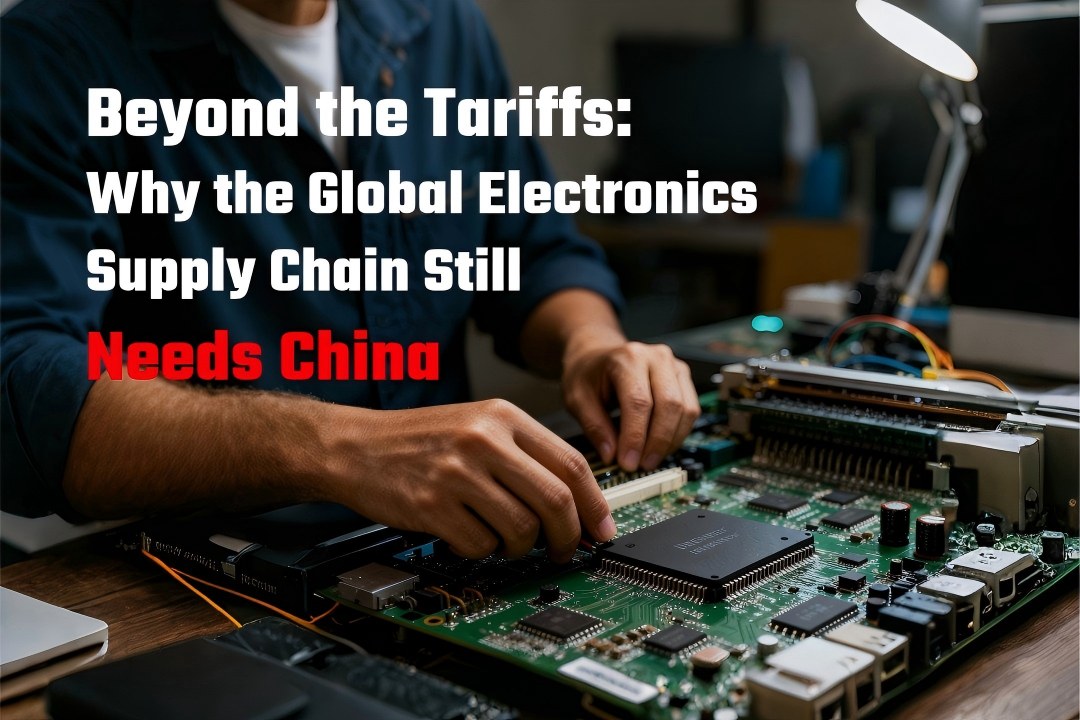Beyond the Tariffs: Why the Global Electronics Supply Chain Still Needs China
In recent years, escalating international trade friction, particularly the high tariffs imposed by the United States on Chinese imports, has fueled a pervasive narrative: the "de-Sinicization" of the global

As entrepreneurs deeply rooted in the
An Inimitable Ecosystem: The Overwhelming Advantage of China's PCB/PCBA Supply Chain
Unmatched Industrial Clusters and Efficiency: Represented by "Hardware Silicon Valleys" like Shenzhen, China has cultivated the world's most concentrated and comprehensive electronics manufacturing cluster. From PCB substrates and component sourcing to SMT, DIP, testing, and assembly, every link in the chain can be completed within an incredibly small geographic radius. This end-to-end solution drastically shortens the Time-to-Market, giving clients an invaluable competitive edge. The Perfect Union of Cost-Effectiveness and Economies of Scale: China's manufacturing advantage has long evolved beyond cheap labor. Through massive production volumes, the "economies of scale" effect allows Chinese suppliers to procure raw materials and components at highly competitive prices, offering clients an unparalleled cost advantage. This is something that no single emerging market can match in the near future. A Deep Well of Technical Innovation and Talent: "Made in China" has evolved into "Intelligently Made in China." In the PCB field, Chinese manufacturers have achieved world-class technical capabilities in high-value products such as multilayer boards, HDI boards, rigid-flex boards, and even IC substrates. Strong government support for high-tech industries and a vast pool of skilled engineers continuously fuel the technological advancement and quality assurance of the PCBA contract manufacturing industry.
The Reality of Relocation: Where Idealism Meets Obstacles
Supply Chain Fragility: While these countries may offer cost benefits in certain segments, their industrial infrastructure and supply chain maturity are nowhere near China's level. The risk of a production line halting due to a single missing component is significantly higher in these regions. Rising Hidden Costs: Building new factories, training a new workforce, navigating local regulations, and dealing with underdeveloped logistics all contribute to substantial hidden costs and management headaches. Furthermore, the skill, proficiency, and efficiency of the local labor force often fall short of Chinese standards, potentially leading to a situation where you "save on tariffs but lose on efficiency and quality." Intellectual Property and Communication Barriers: Working with established Chinese contract manufacturers offers the benefit of streamlined communication processes refined over many years. Moreover, the emphasis on intellectual property protection has grown stronger. In a new environment, businesses face not only language and cultural barriers but also often inadequate IP protection frameworks.
The Smarter Solution: Turning Challenges into Opportunities with Chinese Suppliers
Strategic Partnership and Cost Optimization: By partnering with an experienced Chinese supplier, you can leverage their strong bargaining power and flexible production solutions to partially absorb the impact of tariffs. Long-term partnerships often lead to better payment terms and pricing strategies. The "China +1" Hybrid Sourcing Model: "China +1" should not mean "de-China." It should be about optimizing a global footprint. Companies can keep their core, complex PCBA manufacturing and PCB productionin China to leverage its technological and efficiency advantages. Meanwhile, assembly stages that are more tariff-sensitive or less technically demanding can be allocated to another country. This hybrid model mitigates some risks while retaining the core competitiveness of the Chinese supply chain. Upgrading Product Value: Tariff pressure is also a catalyst for Chinese manufacturers to accelerate technological upgrades and move into higher-value-added product segments. For overseas clients, this means an opportunity to co-develop more complex and sophisticated products with Chinese partners, offsetting the impact of tariffs by increasing the intrinsic value of the product itself.
Conclusion

